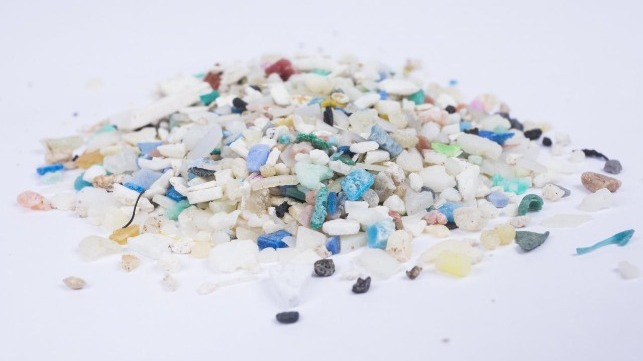Research into Microplastics in the Maritime Environment

A new study commissioned by Seas At Risk, an association of environmental organizations from across Europe, shows that microplastics in the marine environment come from numerous sources and economic sectors, and have widespread environmental impacts, including climate implications. Released in advance of the upcoming European Commission’s EU Green Week 2021. The study carried out by the Galway-Mayo Institute of Technology explores the sources and solutions for microplastics.
“Given the expected exponential increase of global plastic production, and the subsequent release of microplastics into the environment, it is vital to urgently prevent this pollution from escalating, and to avoid dramatic consequences on marine biodiversity, global ecosystems, and the climate,” says Frédérique Mongodin, Senior Marine Litter policy officer with Seas At Risk. “As certain types of plastics release more microplastics, toxic chemicals, and GHGs than others, choosing the right type of plastic and additives in the design phase can drastically reduce microplastic pollution. However, only the adoption of mandatory and targeted upstream measures at EU level will enable the necessary adjustments across sectors.”
Seas At Risk cites data that shows global plastic production has been increasing exponentially since the 1950s. It stood at over 200 million tons produced in 2000 increasing to 368 million tons in 2019. They cite a forecast that production will exceed 500 million tons by 2025 and 650 million by 2030.
The research looks at the sources of microplastics in the marine environment finding that personal care products that contain added microplastics, such as glitter, or microbeads found in scrubs, only constitute two percent of the total microplastics released into the marine environment. They contend that the majority of microplastics in the ocean are unintentionally added microplastics, and come from sources such as tire dust, synthetic textile fibers, city dust, and marine paints. Additional microplastics resulting from the degradation of larger plastic items at sea come from most economic sectors they report, including agriculture, construction, tourism, aquaculture, fisheries, and shipping.
Of all plastic entering the ocean, the report says that 94 percent ends up on the seabed, where it will take centuries to degrade, releasing chemicals, microplastics, and nanoplastics in the process, which are all harmful to both marine life and the ecosystem balance. The GMIT study says that microplastics also have implications for the climate, both by contributing to the emission of GHGs and by reducing the mitigation effects of the ocean against climate change.
Once exposed to solar radiation, certain types of plastics (mainly single-use plastics and packaging) undergo a gradual degradation and fragmentation process. This releases GHGs, such as methane and ethylene. Methane contributes to greenhouse gas effects 34 times more than carbon dioxide. With an expected increase of 33-36 percent in plastic production by 2025, emissions of methane are predicted to rise to exceed 100 million tons if no mitigation efforts are implemented.
The report says that the most concerning environmental impacts of microplastics contribute to the loss of biodiversity, with implications on the marine food webs, and threaten ecosystem balance. In the study, GMIT researchers identified concerns over the ingestion of microplastics by marine organisms and the bio-accumulation of hazardous substances by marine fauna and flora.
Depending on their characteristics, certain types of plastics release a much higher quantity of microplastics, toxic chemicals, or GHG emissions compared to others. Therefore, the solutions proposed in the study aim to prevent microplastic release at the source.
They are calling for banning specific types of plastics that are proven to release a high number of microplastics, such as synthetic foam polymers used in packaging and boxes as well as plastic mulch in agriculture and horticulture. They also say that mandatory eco-design requirements should be set for textiles at the design stage to gradually eliminate the most problematic fabrics and additives. They also propose the establishment of a maximum threshold for microplastic release by tires into the environment.
The study says that a ban on all non-essential single-use plastic products should be implemented to reduce microplastic pollution in the long term. Others steps should include phasing out potentially toxic additives and create an open-access database of plastic additives to provide information on the presence of chemicals in products.
Among the mandates that they propose governments enact are for the containment of plastic production and recycling facilities to prevent the release of pellets as well as best practice for the handling rules and regular staff training to prevent the loss of maritime containers and fishing gear at sea as this generates large quantities of secondary microplastics.
The complete report and recommendations is available on the Seas At Risk website.

that matters most
Get the latest maritime news delivered to your inbox daily.
(Photo of microplastic by Florida Sea Grant, via CC BY-NC-ND 2.0)
